|
White Bean Stew is a hearty bowl of perfection to warm you to your toes during the cold months. Brimming with white beans, aromatic herbs, and vegetable stock, it’s a comfort dish that hits every spot. Serve with garlic bruschetta on the side for an added dash of deliciousness. This hearty recipe features bold flavors of fresh rosemary, sage and leeks, it only requires one pot and includes no ham hock. It’s just pure, clean protein, no tomatoes, with zero cholesterol, and as healthy as can be. When served with garlic bruschetta or Crusty Bread, it becomes a complete and satisfying meal. If desired, you could always serve it with some Ciabatta Bread or Focaccia Bread on the side as well. If you decide to add more side dishes, that’s totally up to you, but often ends up being too much food for me. This is one hearty meal! What is Ribollita Soup?Ribollita soup is a Tuscan bread soup made with beans and vegetables. It’s usually made with a specific flavor from a rind of Parmigiano reggiano cheese. In our case a kind alternative, dairy-free nutritional yeast baby. This specific recipe is basically a white style ribollita as no tomatoes are used in this dish. This changes with the seasons and the regions. There isn’t only one, legit version of ribollita out there. It varies from home to home and pantry to pantry. White Bean Stew Tips + Variations
Are White Beans the Same as Navy Beans?Navy beans are just a type of white bean. There are quite a few varieties of white beans out there. For example, cannellini, pea beans, great northern beans, etc. Although many of them taste very similar and look very similar, they are definitely different varieties and not the exact same. So, for this soup, choose your favorite white bean and roll with it, the authentic Italian beans would be the cannellini. White Bean Stew from ScratchWhite Bean Stew - a hearty bowl of perfection to warm you to your toes during the cold months. Brimming with white beans, aromatic herbs, and vegetable stock, it’s a comfort dish that hits every spot. Serve with garlic bruschetta on the side for an added dash of deliciousness. Ingredients
Instructions
Nutrition Calories: 266kcal | Carbohydrates: 49g | Protein: 18g | Fat: 1g | Saturated Fat: 1g | Sodium: 32mg | Potassium: 1415mg | Fiber: 12g | Sugar: 2g | Vitamin A: 1459IU | Vitamin C: 3mg | Calcium: 203mg | Iron: 8mg This article was originally posted here.
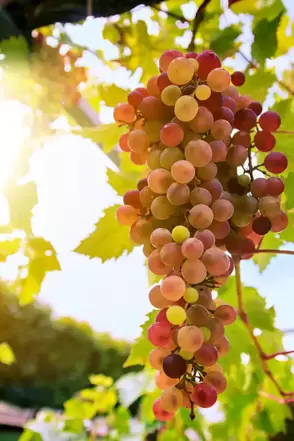
People have cultivated grapes for thousands of years, including several ancient civilizations that revered them for their use in winemaking. Grapes also make a quick and delicious snack you can enjoy at home or on the go.
You may find them in various colors, including green, red, black, yellow, and pink. They come in multiple forms, too, from raisins to jellies to juice. Seeded and seedless varieties also exist. Grapes offer a wealth of health benefits, primarily due to their high nutrient and antioxidant contents. Here are the top 16 health benefits of grapes.
1. Packed with nutrients
Grapes are high in several important nutrients. Just 1 cup (151 grams) of red or green grapes provides (1Trusted Source):
Grapes also provide good amounts of B vitamins like thiamine, riboflavin, and B6. Both thiamine and riboflavin are needed for growth and development, while B6 is mainly required for protein metabolism (4Trusted Source, 5Trusted Source, 6Trusted Source).
SUMMARY
Grapes contain many important vitamins and minerals, including copper and vitamins B and K.
2. May aid heart health
Grapes may boost heart health in several ways. May help lower blood pressureOne cup (151 grams) of grapes contains 6% of the DV for potassium. This mineral is necessary for maintaining healthy blood pressure levels (1Trusted Source, 7Trusted Source). Evidence shows that potassium helps lower blood pressure primarily by helping dilate your arteries and veins. It may also help excrete sodium and prevent the narrowing of arteries and veins that would otherwise increase blood pressure (8Trusted Source). However, a review of 32 studies determined that potassium intakes that are both too low and too high may lead to high blood pressure. Researchers advised sticking to the current daily intake recommendation of 4.7 grams (9Trusted Source). May help reduce cholesterolCompounds found in grapes may help protect against high cholesterol levels by decreasing cholesterol absorption (10Trusted Source). In an 8-week study in 69 people with high cholesterol, eating 3 cups (500 grams) of red grapes per day helped lower total and LDL (bad) cholesterol levels. However, white grapes didn’t have the same effect (11Trusted Source). Additionally, diets high in resveratrol — an antioxidant in grapes — such as the Mediterranean diet have been shown to decrease cholesterol levels (12Trusted Source).
SUMMARY
Compounds in grapes may protect against heart disease by lowering blood pressure and cholesterol levels. 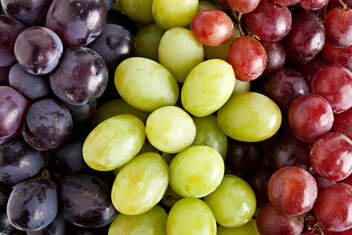
3. High in antioxidants Antioxidants are compounds that help repair the damage to your cells caused by free radicals — harmful molecules that cause oxidative stress. Oxidative stress is associated with several chronic health conditions, including diabetes, cancer, and heart disease (13Trusted Source). Grapes are rich in several powerful antioxidants. The highest concentration of antioxidants is found in the skin and seeds. However, multiple factors may affect their concentration, including grape variety, maturity, post-harvest storage, and environmental factors (14Trusted Source). Interestingly enough, these beneficial compounds remain present even after fermentation, which is why wine is also an antioxidant source (14Trusted Source, 15Trusted Source). Some grape varieties contain a higher content of anthocyanins, a class of flavonoids that give these fruits orange, red, blue, pink, and purple colors. Human and animal studies indicate that anthocyanins may help prevent or treat brain and heart diseases (14Trusted Source, 15Trusted Source). Other important antioxidants in this fruit are resveratrol and quercetin, which may protect against heart disease, high blood sugar levels, and cancer (14Trusted Source, 16Trusted Source). Grapes also contain vitamin C, beta carotene, lutein, and ellagic acid, which are also powerful antioxidants (14Trusted Source).
SUMMARY
Grapes are rich in antioxidants, which are beneficial plant compounds that may protect against chronic health conditions.
4. May have anticancer effects
Antioxidants in grapes may protect against certain types of cancer (14Trusted Source). Resveratrol, an antioxidant in this fruit, may help by reducing inflammation, acting as an antioxidant, and blocking the growth and spread of cancer cells in your body. In fact, it has been studied for its effects against numerous cancers (17Trusted Source, 18Trusted Source, 19Trusted Source, 20Trusted Source). Grapes also contain quercetin, anthocyanin, and catechin antioxidants — all of which may have cancer-fighting effects (21Trusted Source). Test-tube and animal studies show that grape extracts may block the growth and spread of human colon and breast cancer cells (22Trusted Source, 23Trusted Source, 24Trusted Source). Additionally, a 2-week study in 30 people found that those over the age of 50 who ate 0.3–1 pound (150–450 grams) of grapes per day experienced decreased markers of colon cancer risk (25Trusted Source). While more human studies are needed, a diet high in antioxidant-rich foods, such as grapes, has been linked to lower cancer risk (26Trusted Source).
SUMMARY
Antioxidants in grapes may prevent the growth and spread of multiple types of cancer, though human research is lacking.
5. May protect against diabetes and lower blood sugar levels
Grapes contain 23 grams of sugar per cup (151 grams), which may make you wonder if they’re a good choice for people with diabetes (1Trusted Source). If you take a look at their glycemic index (GI) rating — a measure of how quickly a food raises your blood sugar — you’ll see that it ranges from 49–59, depending on grape variety (27, 28Trusted Source). Similarly, the definition of low GI is variable depending on the source — some people consider under 55 as low, while others consider under 50 as low (27, 28Trusted Source). This means that grapes’ GI score may range from low to medium, in which case they may raise your blood sugar levels at a slow or moderate pace but won’t necessarily spike it. However, keep in mind that eating too much of a low GI food will have the same effect on blood sugars as eating a high GI food. So, it’s best to eat grapes in moderation. In addition, compounds found in grapes may help improve markers of insulin response. In a review of 29 studies in 1,297 adults, grapes and grape supplements significantly decreased what’s called homeostatic model assessment of insulin resistance (HOMA-IR), a measure of insulin resistance (29Trusted Source). In particular, the compound resveratrol may improve your body’s ability to use insulin by (30Trusted Source, 31Trusted Source, 32Trusted Source):
SUMMARY
Though grapes are high in sugar, their low to moderate GI makes them fairly safe to eat in moderation if you have diabetes. Additionally, compounds in grapes may protect against high blood sugar.
6. May benefit eye health
Plant compounds in grapes may protect against common eye diseases. For instance, in a study in mice, those fed grapes showed fewer signs of damage to the retina and had better retina function than mice not given the fruit (33Trusted Source). Additionally, in a test-tube study, resveratrol was found to protect retina cells in the human eye from ultraviolet A (UVA) light. This may lower your risk of age-related macular degeneration (AMD), a common eye disease (34Trusted Source). According to one review, resveratrol may also safeguard against glaucoma, cataracts, and diabetic eye disease (35Trusted Source). Plus, grapes contain the antioxidants lutein and zeaxanthin, which have been shown to help maintain eye health, improve visual performance, and prevent common age-related eye diseases (36Trusted Source, 37Trusted Source).
SUMMARY
Grapes contain several compounds — such as resveratrol, lutein, and zeaxanthin — that may help prevent common eye diseases. 
7. May improve memory, attention, and mood
Eating grapes may boost memory and brain health. In a 12-week study in 111 healthy older adults, taking 250 mg of a grape supplement daily significantly improved scores on a test measuring attention, memory, and language, compared with baseline values (38Trusted Source). Another study in healthy young adults showed that drinking 7.8 ounces (230 mL) of grape juice improved both mood and the speed of memory-related skills 20 minutes after consumption (39Trusted Source). What’s more, in a study in rats, 4 weeks of resveratrol intake improved learning, memory, and mood. In addition, the rats’ brains showed signs of increased growth and blood flow (40Trusted Source). Lastly, resveratrol may protect against Alzheimer’s disease by reducing brain inflammation and removing amyloid-beta peptide, the accumulation of which has been linked to this condition (41Trusted Source, 42Trusted Source).
SUMMARY
Grapes contain compounds that may improve memory, attention, and mood, as well as protect against Alzheimer’s disease.
8. May support bone health
Grapes contain many minerals necessary for bone health — including potassium, manganese, and vitamins B, C, and K, which help prevent osteoporosis, a condition that leads to fragile bones (1Trusted Source, 43Trusted Source). Additionally, animal and human studies demonstrate that resveratrol may improve bone density (44Trusted Source, 45Trusted Source, 46Trusted Source). For example, in an 8-week study, rats fed freeze-dried grape powder had better bone absorption and calcium retention than rats that didn’t receive the powder (44Trusted Source). Furthermore, a 2-year study in postmenopausal women showed that taking 75 mg of resveratrol twice daily improved bone mineral density and slowed bone loss, reducing the risk of major fractures and hip fractures (46Trusted Source).
SUMMARY
Grapes contain vitamins and minerals important for bone health, although more research is needed in humans.
9. May protect against bacteria and fungi
Several compounds in grapes may protect against harmful microorganisms (4Trusted Source7Trusted Source, 48Trusted Source). For example, resveratrol has antimicrobial properties that inhibit the growth of bacteria and fungi like Campylobacter jejuni and Candida albicans (49Trusted Source). It may also protect against foodborne illnesses. When added to various types of food, resveratrol helps prevent the growth of harmful bacteria, such as E. coli (49Trusted Source, 50Trusted Source). Other compounds in grapes with antimicrobial activity include anthocyanins, which may destroy bacterial cell walls (51Trusted Source). Lastly, grapes are a good source of vitamin C, which is well known for its immune system benefits (1Trusted Source, 52Trusted Source).
SUMMARY
Grapes contain several compounds that may have beneficial effects against harmful bacteria and fungi.
10. May slow signs of aging and promote longevity
Plant compounds in grapes may affect aging and lifespan. Research shows that resveratrol may delay signs of aging by mimicking the beneficial effects of calorie restriction, such as reducing oxidative stress, enhancing stress resistance, and improving inflammatory response (53Trusted Source, 54Trusted Source). Keep in mind that these benefits have only been seen in animal studies. In addition, resveratrol activates the SirT1 gene, which is activated by low calorie diets and has been linked to longer lifespans (55Trusted Source, 56Trusted Source). Resveratrol also activates sirtuin, a protein that regulates cellular processes like aging and cell death (57Trusted Source).
SUMMARY
Resveratrol, which is found in grapes, has been shown to activate genes associated with slower signs of aging and longer lifespan.
11. May lower inflammation
While low level inflammation is a typical bodily response, chronic inflammation plays a key role in the development of long-term health conditions like cancer, heart disease, diabetes, arthritis, and autoimmune disorders (58Trusted Source). Notably, anthocyanin and resveratrol compounds in grapes have been linked to powerful anti-inflammatory properties (51Trusted Source, 59Trusted Source). Research shows that both compounds can suppress the expression of inflammatory markers like tumor necrosis factor-alpha (TNF-alpha) and interleukin-6 (IL-6) (60Trusted Source, 61Trusted Source).
SUMMARY
Grapes contain compounds with anti-inflammatory effects, which may in turn protect against chronic diseases. 
12. May benefit skin and hair health
Resveratrol may have numerous protective effects on your skin and hair. In fact, this compound has gained popularity in cosmetic products because it penetrates the skin barrier and increases collagen concentration, as well as protects against UV damage from sun exposure (62Trusted Source, 63Trusted Source). Animal studies show that resveratrol’s effect on collagen production may promote faster wound healing (63Trusted Source). Because oxidative stress and inflammation play a role in hair loss, research suggests that resveratrol may also promote hair growth (64Trusted Source). For starters, resveratrol protects hair follicles from environmental damage. It also promotes the rapid increase of important follicular cells that encourage hair growth (64Trusted Source).
SUMMARY
The antioxidant resveratrol in grapes may protect your skin from damage and promote hair growth but more research is needed.
13. May have anti-obesity effects
Obesity may increase your risk of multiple health conditions, including diabetes, heart disease, and cancer (65Trusted Source). Notably, anthocyanins in grapes may have anti-obesity effects. Studies in rats fed a high fat diet show that anthocyanins may suppress body weight gain and reduce liver fat content (60Trusted Source). Additionally, research in animals found that proanthocyanidin extract from grape seed may increase levels of the fullness hormone GLP-1, which may lower appetite and reduce food intake (65Trusted Source).
SUMMARY
Antioxidants in grapes may combat obesity by inhibiting appetite and preventing weight gain. However, research in humans is lacking.
14. May relieve constipation
Constipation involves passing stool less often than usual and feelings of incomplete evacuation (66Trusted Source, 67Trusted Source). Dietary changes like increasing fiber and fluid intake are essential to treatment, since dehydration is a common secondary cause of constipation (67Trusted Source). Fiber in whole fruits like grapes may significantly improve constipation symptoms by reducing the time it takes stool to move through your colon, as well as increasing fecal weight and daily bowel movements, compared with fruit juices (68Trusted Source). Additionally, grapes are 81% water, so they may help you reach your hydration goals (1Trusted Source).
SUMMARY
As a good source of water and fiber, grapes may help relieve constipation. 
15. May support sleep
Evidence suggests a direct link between diet and sleep (69Trusted Source). In fact, studies have determined that grapes are a natural source of melatonin, a sleep-promoting hormone that regulates your sleep-wake cycle (69Trusted Source, 70Trusted Source, 71Trusted Source). Interestingly enough, melatonin is found mainly in grape skin, which is why it’s also present in products like grape juice and wine (69Trusted Source). Since melatonin works hand-in-hand with your internal clock, intake timing is an essential factor to consider. If you’re eating grapes to help you sleep, aim to consume them early in the evening.
SUMMARY
Grapes are a natural source of melatonin, a hormone that may improve your sleep quality.
16. Easy to add to your diet
Grapes are delicious, versatile, and easy to incorporate into a healthy diet. Here are a few ways to enjoy them:
SUMMARY
Grapes are easy to snack on or add to your meals. Grape juice and red wine — in moderation — may provide benefits as well.
Fresh grapes fruit vs. grape juice
Both grapes and grape juice share multiple health benefits, but the whole fruit is generally healthier. That’s partly because the production process for grape juice — which includes heating the juice to avoid fermentation — may reduce its antioxidant content by 44% (72Trusted Source, 73Trusted Source). In addition, fruit juices provide little to no fiber compared with whole fruits, as well as a higher sugar content. Evidence shows that diets that include whole fruits instead of juice are more effective for weight management for the following reasons (68Trusted Source):
So, you should aim to eat fresh grapes rather than drink grape juice whenever possible.
SUMMARY
While whole grapes and grape juice provide multiple nutrients, eating fresh fruit ensures a higher intake of fiber and antioxidants, plus a lower sugar intake. 
Does wine provide health benefits?
Like whole grapes and grape juice, wine is a good source of antioxidants and offers numerous health benefits (75Trusted Source). In fact, research shows that moderate wine intake may protect against heart disease, diabetes, and even cancer (75Trusted Source, 76Trusted Source, 77Trusted Source). However, keep in mind that heavy drinking — defined as more than four drinks per day — is associated with an increased risk of death and heart disease (78Trusted Source, 79Trusted Source). Current U.S. dietary guidelines recommend limiting your alcohol intake to 1 drink per day for women and 2 drinks per day for men. For reference, every 5 ounces (150 mL) of wine equals 1 drink (79Trusted Source). Nevertheless, while moderate wine intake may positively affect your health, like grape juice, it lacks whole grapes’ fiber content.
SUMMARY
Like whole grapes, wine is a good source of antioxidants, and it offers multiple health benefits. However, excessive intake may lead to detrimental health effects.
The bottom line
Grapes offer several important nutrients and powerful plant compounds that benefit your health. Though they contain sugar, they don’t appear to negatively impact blood sugar control when eaten in moderation. Antioxidants like resveratrol provide most of grapes’ benefits, including their anti-inflammatory, anti-diabetes, and anticancer properties. They are also quite delicious and easy to add to your diet. For the most benefits, choose fresh grapes over grape juice or wine. Just one thing
Try this today: If you want your grapes to last up to 14 days, choose the ones with a green stem and store them in an airtight container at the back of your fridge, which is usually the chilliest spot.
AuthorWritten by Ariane Lang, BSc, MBA and Melissa Groves — Medically reviewed by Imashi Fernando, MS, RDN— Updated on January 28, 2022.
This article originally appearedhere.
For Those Who've Taken The Juice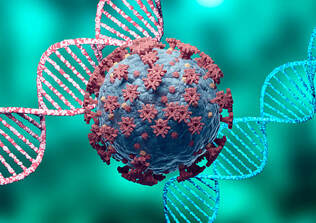
A few weeks ago, a friend snail-mailed some information to me regarding the covid19 vaccine. Knowing I was a nutritionist, and a lover of all things natural, she sent me this letter believing I would find it useful. And I believe it is.
Now, this isn't about "detoxing" from the vaccine, it is about diverting the process which causes damage. And although this is really helpful information, the best health option would be to avoid the shot altogether. But it's still useful to nearly everyone since it's well known and documented that vaccines are able to shed (via live-bacterium) to others directly from the people who've taken a shot. And since we don't know what the long term effects or outcomes will be, with receiving the shot or being around those who have, these nutrients and natural substances could potentially help everyone. Regardless of where you stand on vaccinations, the substances mentioned below will help protect against cellular damage from the covid shot, so it's worth passing along. In the letter...
As the letter states, "This information could possibly save someone's life and has been provided to us by a physician who wishes to remain anonymous. The goal of this physicians research is to help the body recover from the damage and detoxify, stabilize and cleanse the toxic ingredients from the body including hydrogels, luciferase and nanobots, as well as silence the messenger RNA (mRNA) contained in the covid vaccine."
Below you will find what was written in the letter sent to me. Upon searching online, I found a few different sites/blogs with this information posted as well, but I do not know the original author. I've decided to share this info on my blog because what would be the purpose of having this information, that could potentially help people, and not sharing it?
What Is mRNA?
Messenger RNA (mRNA) mediates the transfer of genetic information from the cell nucleus to ribosomes in the cytoplasm, where it serves as a template for protein synthesis.
Genes specify proteins via transcription ("rewriting" the DNA sequence in the form of mRNA) and translation ("decoding" the mRNA and building the protein). In other words, RNA synthesis is transcription, while protein synthesis is translation. So, if the covid vaccine uses mRNA to change your genetic code, then the key to preventing damage would logically be to interfere with the translation of the message, right? Voila! The RNA Interference system (RNAi) is a mechanism by which cells control gene expression by shutting off translation of mRNA. RNAi can also be used to shut down translation of viral proteins when a cell is infected by a virus (live-bacterium, in this case). The RNAi system also has the potential to be exploited therapeutically and can prevent the viral RNA from replicating.
Below are the TOP FIVE recommended substances to mitigate damage from mRNA vaccines (in no particular order). Bold printed words are links to the science behind each nutrient. 
1 | IODINE
An essential mineral, iodine is used by the thyroid gland to make thyroid hormones that control many functions int eh body, including growth and development, repairing damaged cells and supporting a healthy metabolism. Because your body does not produce iodine, it needs to be supplied in the diet. Iodine can also be used to detoxify toxic compounds and strongly increases the mRNA decay rate. Dietary iodine also controls its own absorption through regulation of the sodium/iodine (NIS) symporter, which protects the functions of the thyroid gland. Natural resources of iodine include seaweed, cod, shrimp, tuna, yogurt, eggs, prunes and lima beans. 2 | ZINC Zinc enables the body to make proteins and DNA, contributes to wound healing and plays a role in childhood growth and development. It also has antioxidant properties that play an important role in cell-mediated immune function and modulates mRNA levels of cytokines. Zinc has been shown to to regulate transcription in cancer cells. Plus zinc globally down-regulates microRNA expression with key enzymes and proteins necessary for microRNA maturation and stability. Lastly, zinc-finger protein serrate is among the plant compounds that may silence mRNA. Natural resources for zinc include dark chocolate, sweet potatoes, quinoa, rice, yogurt, eggs, cheese, nuts (cashews, almonds, peanuts, pine nuts), sesame seeds, pumpkin seeds, flaxseeds, lentils, chickpeas, oysters, shrimp and crab. 3 | QUERCETIN Quercetin, a flavonoid with multiple proven health benefits to both man and animals, displays a plethora ofbiological activities. Quercetin-treated neutrophils exhibited a remarkable suppression in mRNA expression of various pro inflammatory genes. One of the lesser-known and recently discovered roles of quercetin, is modulation of microRNA expression, which plays a vital role in health and disease. Natural resources of quercetin include broccoli, brussel sprouts, cabbage, citrus fruits, bell peppers, asparagus, black tea, green tea, elderberry tea, tomatoes, kale, cherries, berries, shallots, red onion (highest vegetable source), capers (most concentrated source) and scallions. 4 | SUPERCHARGED C60 (Non-Carbon Activated Charcoal) Carbon-60 (C60) is a naturally occurring molecule comprised of 60 carbon atoms forming something that looks like a hollow soccer ball. The scientific name for C60 is "Buckminsterfullerene" and it is the only molecule of a single element to form a spherical cage, and it may be the most powerful antioxidant yet known, performing the antioxidant action of Superoxide Dismutase, Glutathione, Catalase and CoQ10. Over the past 13 years, the "Supercharged" C60 fullerene molecule has been examined, tested and characterized by no less than 15 universities and 5 federally certified research laboratories, resulting in more than "600 evaluations". There has also been considerable positive research conducted regarding Supercharged C60 potential uses in electromagnetic field (EMF) absorption. The Supercharged C60 molecule is a nano carbon material that exhibits incredibly potent antioxidant properties that may augment the body's ability to manage oxidative stress in both healthy and diseased states. Studies indicate that carbon nano carriers can deliver small interfering RNA (siRNA) and enable a myriad of plant biotechnology mRNA applications, internalize into cells and subsequent gene silencing efficiency- being critical for efficient gene knockdown. Supercharged C60 isn't naturally found in food, so the best option is to find a company or high-quality brand to purchase from. I've provided some links below to a couple of brands I personally like. 5 | PQQ (PYRROLOQUINOLINE QUININE) Pyrroloquinoline quinine (PQQ) is a powerful antioxidant and cellular energy booster that works to support the health of your energy-producing mitochondria, protecting them from oxidative damage, even helping you grow new mitochondria. PQQ is actually the only nutrient on earth known to be capable of generating new mitochondria. PQQ is contained in fruits, vegetables and human breast milk. It's a plant growth factor and bacterial cofactor. Studies have shown that PQQ disodium salt (BioPQQ) has positive effects on cognitive function and may have a protective effect on UVA irradiation-induced aging. Natural resources for PQQ include parsley, green pepper, kiwifruit, papaya, tofu, green tea and spinach. More Options For Nutrients
Below are some brands that I recommend but you can also search online for these products, as well as find them in most natural health food stores. Try to find high quality, whole food supplements that are readily bioavailable, so that higher concentrations are absorbed by the body.
The best protocol would be to consume the foods that contain these nutrients, as mentioned above, along with supplementing as well. This will give you your best chance for these substances to work in your body to help protect you from cellular damage. And although I would recommend not getting the shot at all, I understand some people felt pressured and feel like they didn't have a choice. So if you're worried about how these shots are going to effect you and you want the least damage possible, this may be your answer. Remember, it's important to be persistent when eating and supplementing for specific health outcomes. Trying this for a week probably won't help much. You will need to dedicate yourself to making sure you are eating the right foods, along with supplementing, for several months. To Your Health And Happiness! You Might Like These...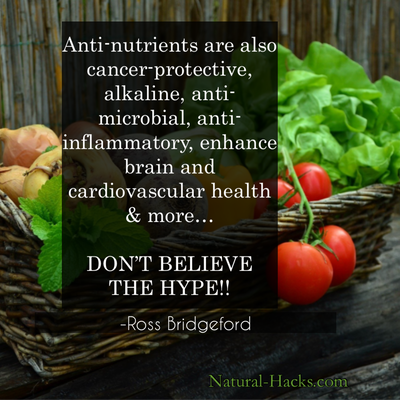 Do you want to know my biggest frustration when it comes to health? The thing that makes my blood boil, makes me hopping mad, makes me want to do this face ????…? It’s what I call ‘health BS’…needless, careless, hype, designed purely for headlines, clicks, shares and for the sake of being ‘controversial’ for attention. I’d go as far as to call it exploitation of information. We are seeing it more and more these days. First it was the oxalate and “Kale is BAD for You!”…that was completely unfounded, without research or evidence, but boy it got a lot of clicks for a few websites… (see more about the truth on oxalate here) Then it was nightshades and “Don’t Eat Tomatoes!”…that too, is based on totally false science, fuzzy logic, and is without research or evidence…but wow, a couple of folks sold some extra books…. And now it’s the frightfully (misleadingly) titled ”anti-nutrients”… And all of a sudden spinach, lettuce, tomato, quinoa, lentils, almonds, broccoli and more are off the table… Wow. I better stop eating those quicker than you can say ‘fake news’, right? Not quite. And we need to dig into this one a little more to get the real truth. And the simple truth too. Now – whereas the nightshade and the oxalate/goitrogen fuzzy-logic-stories were completely without evidence and were making a ton of giant leaps with their hypotheses…anti-nutrients ARE in these foods, they DO exist and we actually know a LOT about them. But once again, why would people let the truth get in the way of a good controversial headline or book? This all pains me so much because I know, from my 15 years experience of coaching people to their health goals and dreams, that confusion, complexity, overwhelm and frustration are the Four Horsemen of the Apocalypse when it comes to taking action with your health and everything I do is to help you to take action… And provocative, fuzzy logic health claims like these are doing nothing but causing people to stop and give up. They’re causing paralysis by confusion. In my ‘Living Alkaline with Ross’ Facebook group last week (it’s free by the way – you can join here) I saw a tongue-in-cheek post from one of my members who said, “I’ve read ten health books since the start of the year, and I’m ready to start – but if I follow all of the advice I’ve read, the only thing left to eat is air!” And I get it. And the hype around anti-nutrients has now left us believing that even some of the most ‘safe’ healthy foods – staples like broccoli, lettuce, spinach, pumpkin, almonds, sunflower seeds, quinoa – are now suddenly off limits? I can see how anyone would want to just throw in the towel and give up. So today, I want to lift the lid on all of this, give you the real truth, the science, the research and most importantly – you’re simple steps forward, so you can completely understand what anti-nutrients are, what you need to be aware of, careful of and what you can ignore. You’ll know the foods you can eat, those you can avoid and everything in between. If you currently have a health challenge and you’ve been told to avoid anti-nutrients…or if you’ve just heard the scare-story and want to know more….or even if this is the first time you’ve even heard of ‘anti-nutrients’, I want you to read on, because I’m about to make things very clear and simple for you. What Are Anti-Nutrients? This is the best place to start, so we really understand what lay behind this ever-so-negative name… Anti-nutrients, are natural compounds (note, not a result of genetic engineering, they’re natural) in plants. In the scientific community, the term anti-nutrient was attributed to certain plants because some of the compounds in the plant can be linked to a lower absorption rate of some of the other nutrients in that plant. Based on that information alone, you can see how some people have taken that one fact and run wild with it. But we need to dig into this a bit more, because that’s only one tenth of the full picture. These antinutrients include:
They are a small part of the bigger, complex matrix that makes up the growing plant tissue. And indeed it is TRUE that some of these anti-nutrient compounds CAN lessen the body’s absorption and use of certain minerals and other nutrients to some degree… But this is only one part of the picture. What You Need to Know About Anti-Nutrients RIGHT NOW There is a bigger picture here, and please remember this because it is so important: While one result of consuming anti-nutrients is that they block certain mineral absorption, you HAVE to know that they do NOT block the absorption of that mineral entirely, they only block a small amount, they only block it during THAT MEAL (not all day and night). For the consumption of anti-nutrients to become and issue from a nutrient-blocking perspective you would have to both:
What’s in a name…? The name ‘anti-nutrients’ is hugely misleading. It only refers to this one (let’s face it, insignificant) action. I wish it had another name. These compounds, which are also referred to as the much more accurate ‘phytonutrients’ also have incredible health benefits! We celebrate phytonutrients, but we chastise anti-nutrients. It’s all in the name – they’re the same compounds! These same compounds which are being demonised to the degree that people are fearing the wonderfully healthy quinoa, spinach and broccoli are full of disease-fighting, protective, alkaline, anti-inflammatory, antioxidant-rich goodness! When Anti-Nutrients Turn GOOD!This is the real truth – with many foods there is good and bad. There is risk and reward. There is balance. This is absolutely the case with anti-nutrients phytonutrients. Yes, some may decrease the absorption of some nutrients. This risk is minimal, but it is there, we know it exists. However, these foods all have huge benefits too. Remember – we’re talking fresh, natural foods here! We’re talking broccoli, spinach, lettuce, cabbage, almonds, flax, quinoa, tomato, bell pepper – some of the most healthy, commonly consumed, alkaline, staples going! These foods contain anti-nutrients but their benefit so, so, so, so far outweighs the minuscule risk of the anti nutrient activity. Let’s Look at a Few Anti-Nutrients in More Detail Glucosinolates Let’s take glucosinolates as our first example, which are found in broccoli in particular. Glucosinolates can lower the thyroid’s ability to absorb iodine. Sure. But unless you eat an astronomical amount of broccoli AND you’re chronically deficient in iodine (which is practically impossible in the developed world), it’s likely the consumption of broccoli is not going to any damage…in fact, the consumption of broccoli is going to help HEAL your thyroid as not only does it have a hugely anti-inflammatory, alkaline-forming effect but the iron, omega 3, vitamin c, selenium, zinc and more in broccoli are specifically super-protective and healing for the thyroid. Phytic acid / phytates Phytates are one of the most demonised – the most accused – as they reduce the absorption of calcium, iron, zinc and magnesium. However, as I’ve mentioned – the reduction of absorption is not only tiny, but is restricted to the food they are contained within (not your overall daily diet)…plus phytates have been proven to improves glucose response, reduce kidney stones, give anti-cancer protection, reduce osteoporosis risk, protect and repair DNA and is a powerful antioxidant. Again, the benefit far outweighs the negative. Tannins Even tannins, which can bind to iron, sure – have been proven to be anti-cancer, support the cardiovascular system, they have anti-microbial properties and so much more. Polyphenols And polyphenols, which most people would be surprised to hear are an ‘anti-nutrient’ because all we hear are great things…but yep they’re also on the list! And as we know, polyphenols have huge and diverse benefits for human health including fighting cancer cells, protecting the skin against ultraviolet radiation, fighting free radicals, promoting cognitive health, reducing inflammation, supporting blood sugar health and so much more. I hope you can already start to see how this myth that’s grown around anti-nutrients has been blown way way out of proportion and has been mis-interpreted, mis-communicated and dare I say it again, exploited for attention, website clicks and book sales. What You Need to Know Now, Be Aware Of, Be Careful of & Take Forward The core facts about anti-nutrients, and the reason I want you to largely ignore the hype are:
When people talk about avoiding anti nutrients, they often focus on a couple in particular – lectins and phytates – and those two are both found in gluten-containing grains such as wheat, barley, rye, spelt and so on. I agree with this advice, in that these grains are some of the most pro-inflammatory, acid-forming, oxidative-stress-causing, unhealthy, endocrine disrupting, digestive imbalancing, diabetes-causing foods on earth. They run a close second only to sugar. And there are myriad issues with grains like this – and the phytate and lectin argument often gets thrown in there with them. Which is, again, misleading with regards to anti-nutrients. For example, there is a suggestion that the lectins can cause an immune-response that could theoretically cause leaky gut. It’s what I’d call a ‘dotted line theory’, for sure. HOWEVER, by FAR more contributory to leaky gut is the fact that when digested gluten is broken down into many things, one of which is a protein gliadin which causes the release of another protein called zonulin (which we only discovered in 2000). Zonulin modulates the permeability of tight junctions between cells of the wall of the digestive tract. It should only be released in a case of the immune system requiring action, but gliadin causes it to get released regardless – meaning that there are unrequired gaps and holes in the wall of the digestive tract 24/7 – allowing undigested matter, toxins, waste and more to pass back into the blood – leading to leaky gut. You have to be careful, you need to know the cause and effect, you need to know the truth! Your Steps Forward You know me – I am all about REMOVING unnecessary complication, removing complexity and confusion – and keeping it as simple as possible. The foods that contain the anti-nutrients/phytonutrients include those healthy, alkaline, anti-oxidant rich, anti-inflammatory, real, natural, whole foods. Each of these foods can contain a small risk-factor, and it could even be that prevalence of anti-nutrients. In the case of nightshades it could be the alkaloids that we are being told cause autoimmune issues (when in reality, barely any nightshades contain anything other than trace levels of these, which have zero effect on the body and those that do i.e. potatoes that have sprouted and gone purple, are not something we’re going to eat even close to enough of to have any negative effect). It could even be that spinach contains cyanide in super, tiny, micron-sized amounts! In each of these cases the downside to these foods is miniscule. It shouldn’t even be a point of discussion. Yet the upside is HUGE – these foods are absolutely essential in the prevention of chronic disease. Turmeric, which has been shown to be more powerful than dozens of prescription medications, incredible cancer-preventive, proven to help reverse type 2 diabetes, heart disease and more COULD be put in the naughty corner because it is 2% oxalate. But if you want to have abundant health and prevent degenerative disease you would be absolutely crazy to avoid it. People with thyroid issues are told to avoid oxalate, but turmeric is probably the most anti-inflammatory natural compound on earth and thyroid disorders (both hyper- and hypo-) are disorders of inflammation (see my hypothyroidism plan here). The bottom line is this: nature has provided us with an incredible, abundant array of delicious, nourishing foods. PLEASE don’t get caught up in anything other than the guiding principle of eating real, whole foods, as close to nature as possible. If you stick with my principles of eating 60-70% or more alkaline-forming foods you will thrive. These alkaline forming foods are all naturally nutrient-dense, anti-inflammatory, antioxidant-rich and have a restorative, regenerating, healing effect on the body. Spinach, kale, lettuce, broccoli, almonds, quinoa – these are all absolutely wonderful healing foods. Cruciferous vegetables, oxalate-containing foods, nightshades and indeed these anti-nutrient-containing fruits, vegetables and nuts should never be defined by those titles. They are healthy, natural, healing foods and I am giving you permission to: …completely ignore the hype around anti-nutrients.Keep it Simple, Trust in Nature, Trust in Your Body Don’t get caught up in hype, fads or frustrated by the complexity. Trust your instincts, trust your heart and your intuition. Trust nature to provide the tools and trust your body to know how to use them. Health should be simple, let’s keep it this way. Ross PS. if you want to learn more about getting started on the Alkaline Diet – see my Beginner’s Guide to the Alkaline Diet here AuthorRoss Bridgeford is a bestselling author, writer, health coach and nutrition addict & his dream is to ENERGIZE the World. This blog post was originally posted here
By Justine SanFilippo
Caffeine, cortisol and the belly flab connection
I was once a coffee addict too. It started in college when I pulled a few all-nighters, and the habit stuck ever since. It wasn’t until recently that I was diagnosed with having a food allergy to coffee that I quit for good, and now I understand the caffeine and belly fat connection.
This is how it works: when the body experiences stress, either in the form of taking in caffeine from coffee, tea or energy drinks (or from that boss that drives you crazy) cortisol is released in the body, as well as norepinephrine and epinephrine. The body goes into the “fight or flight” response, which means blood rushes away from your stomach and to your arms, legs and even your brain so you can be alert and "run away from the predator.” Blur spots in your vision? Eat more of these.
One of the most important senses, out of all the five senses we have, is our eyesight. Did you realize that 80% of what we perceive comes through our sense of sight? To reduce the odds of blindness and vision loss, along with cataracts and glaucoma, it's important to stay on top of your eye health. Which is why I wanted to point out these delicious vegetables that can keep your eyes healthy. They are high in zinc, chromium, selenium, copper, magnesium and vitamins A, B, C, D, and E -all of which provide multiple health benefits along with maintaining eye health.
These foods below contain specific nutrients that are especially beneficial to eyesight. Spending just two hours a week in nature will increase your health and wellbeing.
Did you know that spending just 10-20 minutes a day - outside, a few times a week - whether it be a park, a walk around the neighborhood, a trip to the local lake or just sitting in a wooded area-can increase your mental and physical well being? The sounds of nature like hearing birds or squirrels, breathing in fresh air, listening to the wind blowing through the trees and feeling a cool breeze on your face can be rejuvenating and help you feel refreshed. I'm sure we've all felt this way before after spending time outside, but there are other health benefits that may surprise you.
Use these tips for beautiful skin!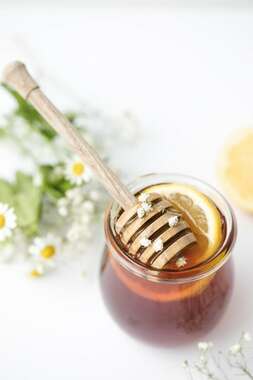
Purchasing skin care products at big merchant stores can be expensive, not to mention the harsh chemicals used in their products. Here I'm going to share with you seven of the best home remedies, I have personally used, that can be made with just a few items from your kitchen.
So here we go, first, I'll mention coconut water! This is nature's sports drink and besides the hydration factor that it provides, it is loaded with potassium! Potassium is a vital electrolyte for the functioning of all your cells. It helps control the amount of water you retain and keeps your blood at a healthy pH level. It is known as a super mineral that can enhance the moisture and feel of your skin. I pick up five cartons and try to drink one liter a day through the week. |
Archives
February 2023
Archives
February 2023
Categories
All
AuthorKelly Cuip is a registered nutritionist, author, researcher, blogger and mother. |
Natural-Hacks Copyright © 2014-2022
Disclaimer: The information in the articles on this blog are strictly of the opinion of the author. The words and other content provided in this blog, and in any linked materials, are not intended and should not be construed as medical advice, as this blog does not provide diagnosis or treatment. This blog is strictly for educational purposes. Some pages may contain affiliate programs with links.
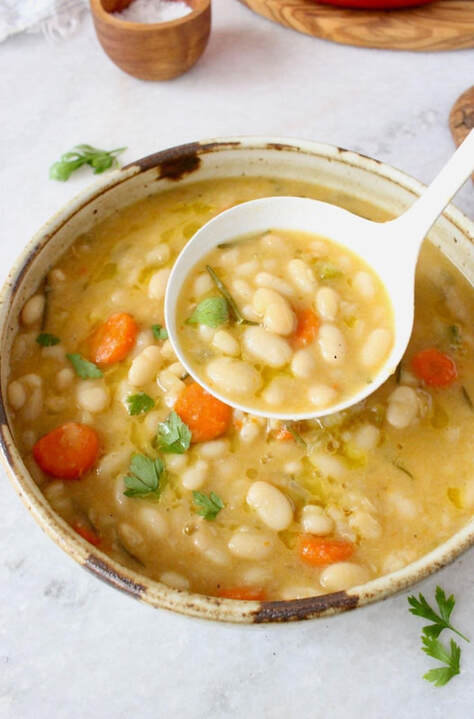
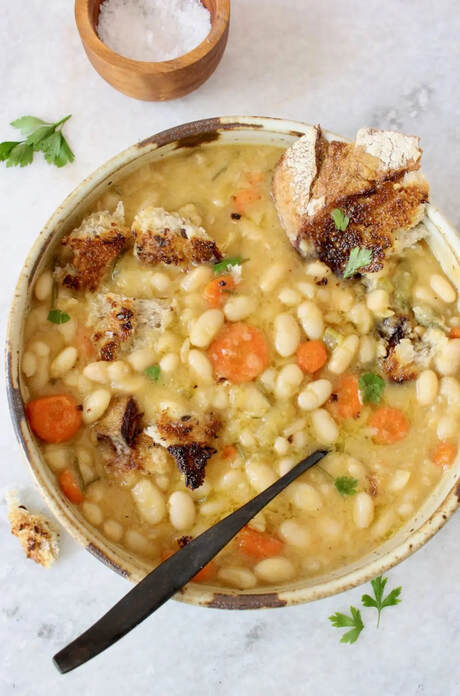


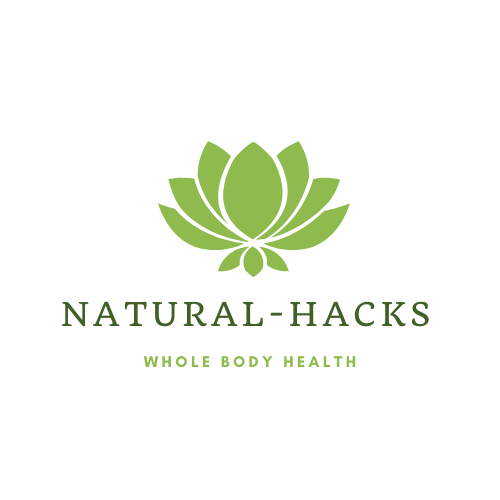
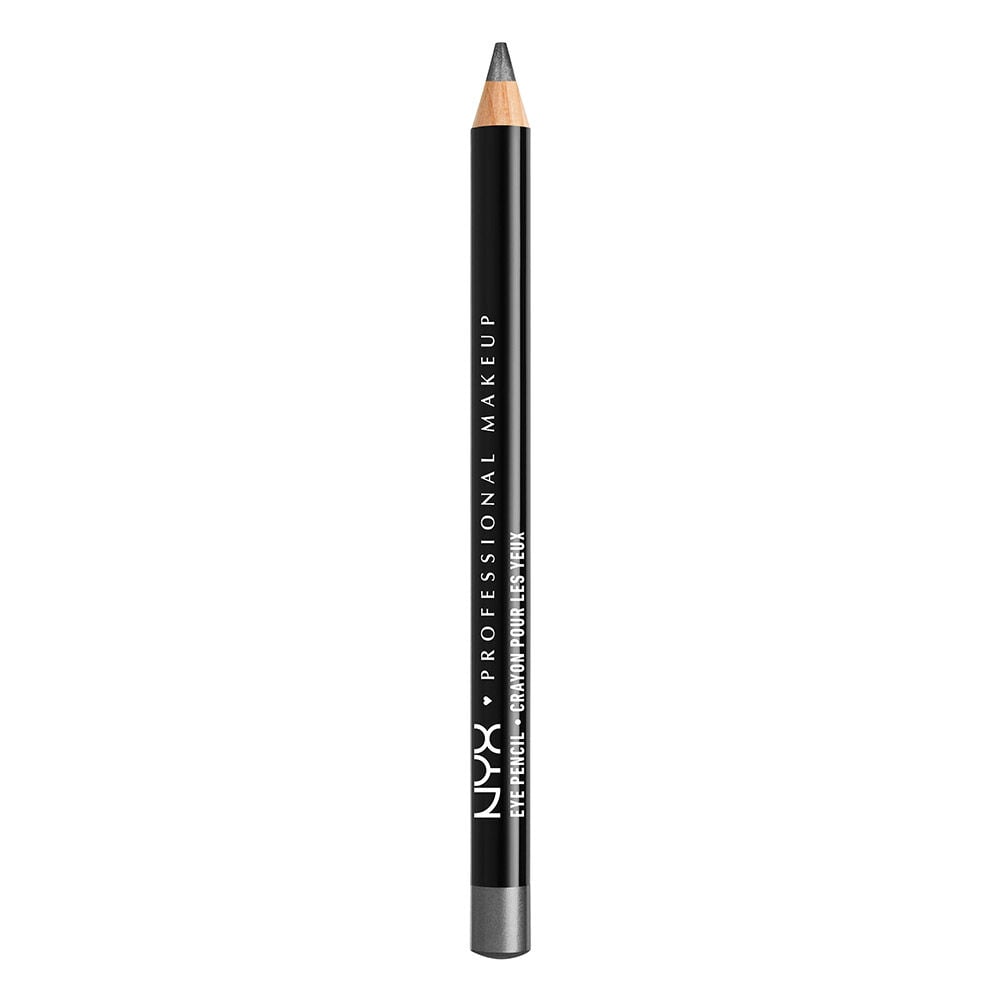
 RSS Feed
RSS Feed





